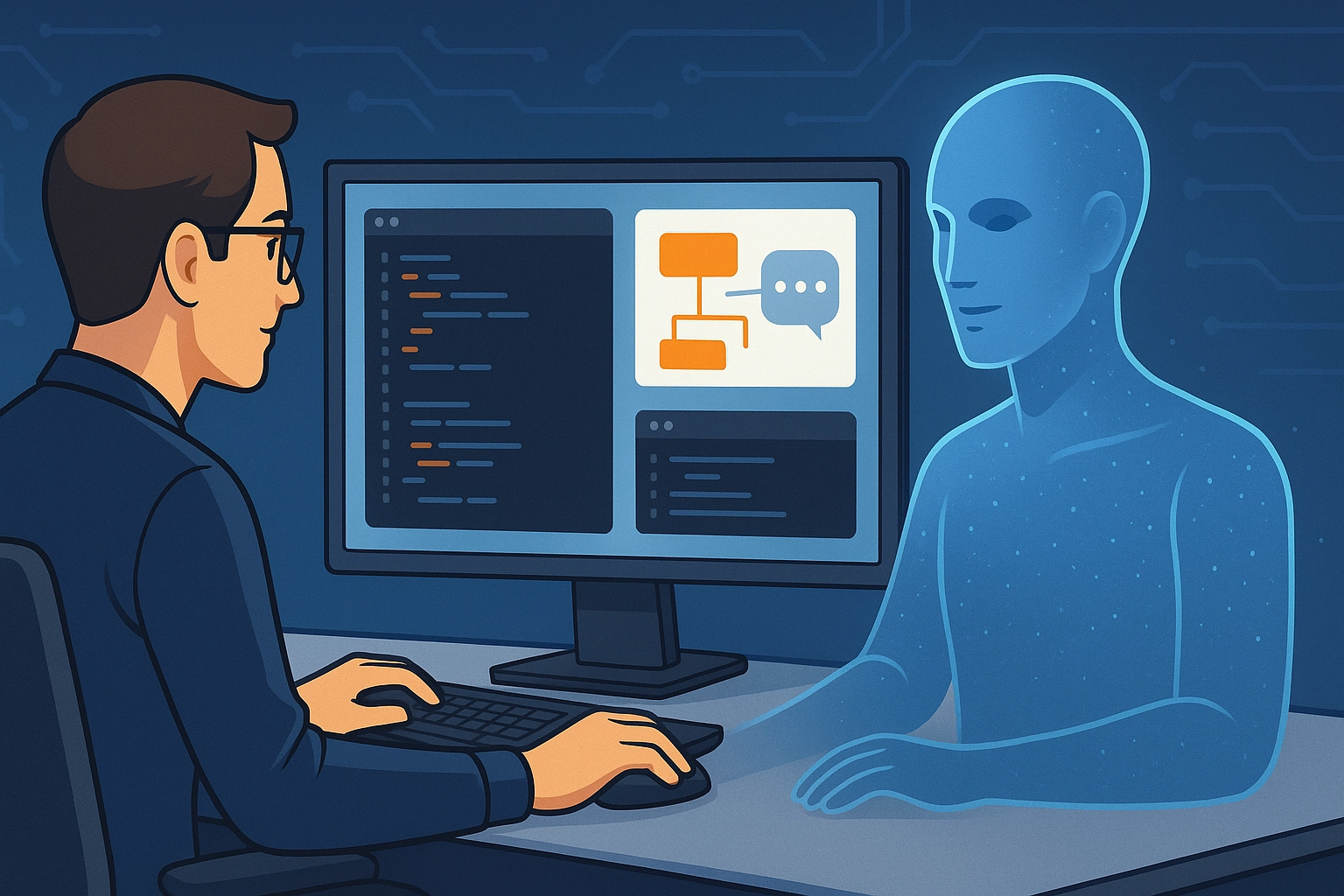Introduction
AI has already reshaped how developers write, test, and ship code—but the next six months promise even more dramatic shifts. As we enter a new phase of intelligent tooling, agentic systems, specialized AI assistants, and leaner local models are poised to redefine software development workflows. This article explores the most promising trends, real-world implications, and ethical considerations developers and organizations should be preparing for now.
1. Agentic AI: From Copilots to Autonomous Coders
We’re moving from assistive AI toward agentic AI—tools that act with autonomy based on intent and context. Unlike passive copilots, these agents can:
- Understand pull request contexts and generate targeted feedback
- Orchestrate tests, commits, and builds independently
- Self-configure environments for specific tasks
Example in Practice: Tools like Devin or SWE-agent are beginning to manage entire feature rollouts—writing code, running tests, and making GitHub commits with minimal human intervention.
Challenges:
- Aligning AI behavior with team norms and codebase styles
- Managing security risks and access permissions
- Preventing “runaway” actions through strong constraints and oversight
2. The Rise of Smaller, Smarter Models
Instruction-tuned models like Mistral-7B, Phi-3, and Gemma have shown that large isn’t always better. With improved efficiency and accuracy, these compact LLMs are:
- Ideal for offline or edge development environments
- Faster to run locally, with lower inference costs
- Easier to fine-tune for custom or enterprise-specific tasks
Use Case: A privacy-sensitive app development team uses a local 7B model to generate unit tests and summaries without sending any code to external APIs.
3. Framework-Specific AI Assistants
AI is becoming more focused. Expect growth in domain-specific agents trained on ecosystems like:
- Laravel: For scaffolding CRUD, defining relationships, and managing migrations
- React/Vue: For generating components, props validation, and handling lifecycle logic
- Kubernetes: For writing Helm charts or debugging YAML configurations
These tools will serve not just as general LLMs but as expert co-architects, reinforcing framework conventions and surfacing context-aware suggestions.
4. Ethical AI: Attribution, Licensing & Guardrails
As AI generates more production code, ethical questions loom larger:
- Attribution: How do we trace AI contributions in a commit history?
- Licensing: What happens if AI outputs resemble GPL or proprietary snippets?
- Bias and Safety: How do we catch unintended behavior in agentic systems?
Recommendations:
- Use tools like OpenCopilot or CodeSquire that tag generated content
- Run license scanners to flag problematic outputs
- Establish internal policies for acceptable AI use, review processes, and disclosure
5. Preparing Your Team for the Shift
The most AI-ready teams will:
- Upskill continuously: Developers should learn how to prompt, evaluate, and guide AI tools
- Automate judiciously: Introduce autonomy where safe, review where necessary
- Adopt transparency: Log, document, and disclose how AI is integrated into the pipeline
Conclusion
The coming months will bring transformative changes to how we develop software. AI will become less of a tool and more of a teammate—an agent capable of reasoning, adapting, and collaborating. By preparing now, teams can ride this wave rather than be swept by it.
Whether you’re a solo developer or part of an enterprise team, understanding and embracing these shifts will be key to staying productive, compliant, and competitive.
